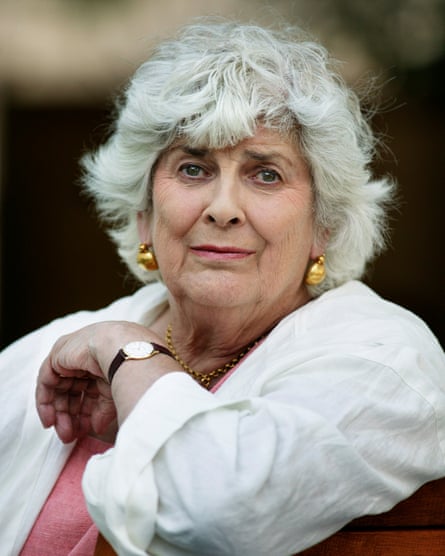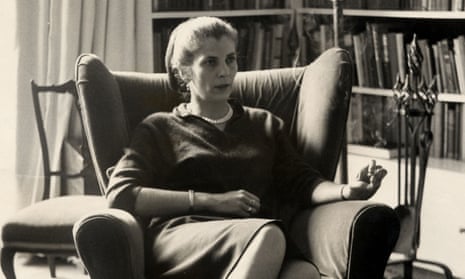There were certain things in her long life that Elizabeth Jane Howard (1923-2014) couldn’t help, such as an unsupportive mother, an abusive father, a propensity for illness, a chronic shyness, and a posh background (used as a stick to beat her with by her third husband). These ordeals found their way into a body of work that would in time become one of the most beloved in 20th-century English fiction. She knew suffering, and transformed it. Yet her most defining characteristic could not entirely be blamed on the stars. Howard was in her mid-50s when she met a therapist who told her, “You are a bottomless pit of neediness”, and suddenly the life that Artemis Cooper has been recounting in this hugely absorbing biography falls into place – almost every romantic misfortune in it explained.
Readers of Howard’s 2002 memoir, Slipstream, will already know many of the stories here, though they do bear repetition. Hers was a very English, upper-middle-class existence with privilege and privation in a constant struggle. Jane (as Cooper, a family friend, names her throughout) had nannies and riding lessons and nice holidays, but she was starved of love by her “overcritical” mother and couldn’t trust her sexually incontinent father. While early ambitions to be an actress came to nothing, her rangy beauty and impeccable breeding seemed to guarantee her stock in the marriage market. Peter Scott, son of the late polar explorer, was a naval hero and a painter whose indifferent courtship of Jane nevertheless ended in matrimony. His formidable mother, Kathleen, issued a warning to the young bride: “If you ever made Pete unhappy I should want to stab you. I should enjoy doing it.” The union produced a daughter, Nicola – her only child – and a fair amount of unhappiness before Jane walked out, unstabbed though not unscathed.
The 1950s began in high promise with the publication of her first novel, The Beautiful Visit, whose central theme would touch a chord with at least half of the reading public: How does a woman find her place in the world when she has been brought up unprepared for anything but marriage? Freed from one calamity, Jane would hurl herself into another, usually an ill-advised liaison with a married man. In 1955 alone she had affairs with Laurie Lee, Arthur Koestler and Romain Gary. A flingette with Ken Tynan lasted up to the point at which his wife returned from a sojourn in the US. More serious was her affair with Cecil Day-Lewis, for the betrayed wife was Jane’s good friend Jill Balcon; not surprisingly, it soured their relationship for years. Her second novel, The Long Viewcorrect, with its daring backwards structure, powerfully dramatised the decades-long torment of an unequal marriage. And here is the mystery of Jane Howard: the writer was so much wiser than the woman. She understood in her fiction what she failed (and kept on failing) to grasp in her life. It was a neediness that surrendered too much ground to men: as Cooper puts it, “she was watching herself through their eyes, not looking at them”.

This ominous insight prepares the way for the most significant relationship of her life, and the most riveting pages of this biography. To contrast the optimism of her early days with Kingsley Amis to the end of their marriage 18 years later is almost as painful here as it was in Slipstream. However much Amis belittled their time together afterwards, the evidence of his first letters to Jane (“unlike any other letters of his I have seen”, wrote his biographer Zachary Leader) suggest that if ever two people were passionately in love, these two were. Again, those who have read the Leader book and Martin Amis’s Experience will know what’s to come and yet still be amazed – and horrified – by scenes of domestic masochism on one side and boorish egotism on the other. Drink played its part in their downfall, though it doesn’t wholly explain why Jane could start out as Kingsley’s lover and intellectual companion only to become, practically speaking, his drudge, cook and chauffeur. (And shameless nepotist: as a judge on the 1974 Booker prize she argued for her husband’s Ending Up to win.) There is nothing sadder here than the moment, towards the bitter end, when Jane is standing at her bedroom window and Kingsley comes up, puts his arms around her and says: “I used to be so much in love with you.”
Her exit from the marriage left Jane in a torment of loneliness. It caused one final astonishing reversal years later, when a mysterious admirer insinuated himself into her life (the episode is recast in her late novel Falling). Only by the shrewdness of her daughter, Nicola, who conducted background checks, was the interloper eventually unmasked as a con man. One might say (cruelly) that there’s no fool like an old fool – Jane was 73 at the time – yet her self-delusion shows a lifelong consistency. While she knew the danger of rushing into a romance, she was unwilling, or unable, to learn from past mistakes. Will the novels endure? As Cooper observes, her work has overtaken Amis’s in popularity; the Cazalet chronicles have developed from a cult following into a national treasure. It is a kind of posthumous revenge, though one wonders if Jane Howard would have traded it for a little more happiness in her earthly span.
Elizabeth Jane Howard: A Dangerous Innocence is published by John Murray (£25). Click here to buy it for £20.50

Comments (…)
Sign in or create your Guardian account to join the discussion